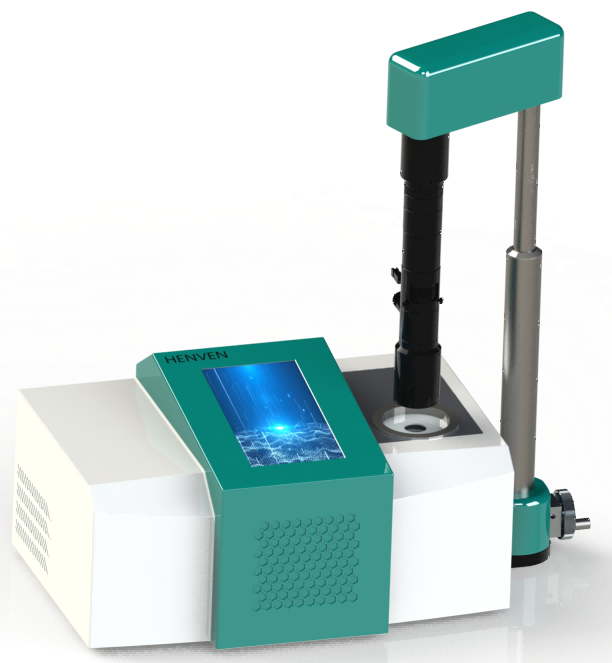Technical Articles


Applications and differences between several types of calorimeters
Differential Scanning Calorimeter
Differential Scanning Calorimetry, DSC, Phase Transition/Thermal Stability of Materials, Trace Samples, High Accuracy
It is mainly used to measure the thermal properties of materials, such as glass transition temperature (Tg), melting point, crystallization temperature, specific heat capacity, thermal stability and so on. It is widely used in material science, chemistry, physics, biomedicine and other fields.
Conforms to ASTM E967, ASTM E2262, ISO 11357 (DSC test for plastics), ASTM E2041 and other standards.
Adiabatic Accelerated Calorimeter
Accelerating Rate Calorimeter, ARC, Thermal Runaway Safety Assessment, Adiabatic Conditions, Extreme Temperature Stress Testing
adiabatic accelerated calorimetry.Based on the adiabatic principle, the sample is slowly warmed up in an adiabatic environment to monitor its self-heating process.The measurement time is long, usually hours or even days, and is used to assess the thermal decomposition properties and reaction kinetics of substances, often used to assess the thermal stability of hazardous chemicals such as battery materials. Sample sizes are typically "grams" and can effectively simulate real exothermic processes.
It is mainly used to study the thermal stability of materials, self-accelerated decomposition temperature (SADT) and the thermal safety of chemical reactions. Commonly used in the thermal stability assessment of batteries, chemical reagents, drugs, etc., as well as the safety risk assessment in chemical production.
Conforms to relevant thermal stability test standards, such as ASTM E1981 (Self-Accelerated Decomposition Temperature Test).
Conical Calorimeter
Cone Calorimeter, Material Combustion Performance, Fire Simulation, HRR and Smoke Density Measurement
Cone calorimeters, used to study the combustion properties and thermal behavior of materials under fire conditions, simulate real fire environments, and are commonly used in the fields of fire safety and materials flame retardancy research. More parameters can be measured, including heat release rate, mass loss rate, ignition time, CO and CO₂ production rate, specific extinction area, soot mass sampling, and effective heat of combustion.
It is mainly used to evaluate the combustion performance of materials under fire conditions, such as the rate of heat release, smoke generation, and mass loss of building materials, furniture, decorative materials, electronic products, and transportation tools.
Conforms to ISO 5660-1, ASTM E1354, GB/T 16172, GB 8624 and other standards.
reaction calorimeter
Reaction Calorimeter, RC, chemical reaction thermal effect studies, real-time heat flow monitoring, process safety optimization
It is mainly used to study the thermal effects of chemical reactions, such as heat of reaction, reaction rate and reaction kinetics. It is widely used in the fields of chemical, pharmaceutical and material science for optimizing chemical processes, developing new reactions and evaluating the safety of reactions.
Complies with ASTM E2070 (Reaction Heat Testing), ICH Q8 (Pharmaceutical Process Development), chemical safety standards (e.g., NFPA 704), such as ASTM E2006, and more.
IKA C6000 Calorimeter
Isothermal reaction calorimeter for calorific value determination
The IKA calorimeter measures the calorific value of a sample by means of oxygen bomb calorimetry, burning the sample in a closed oxygen bomb and calculating the calorific value from the change in water temperature, and is mainly used to measure the calorific value of solid and liquid samples, e.g. the calorific value of food.The model C6000 is available in three modes of measurement: adiabatic, isothermal and dynamic. Here the adiabatic mode takes only about 15 minutes. The sample size is in the milligram range, typically 1-50mg, which is suitable for rapid measurement of small samples.
It is mainly used to determine the calorific value of solid and liquid substances, such as coal, coke, petroleum products, biomass fuels, etc. Its three measurement modes (adiabatic, isothermal, dynamic) are suitable for different types of samples and experimental needs.
Conforms to DIN 51900, ASTM D240/4809/5865, ISO 1928/1716/9831/18125, GB T213, DIN EN 15170/15400 and other standards.

 +86 13917986725
+86 13917986725